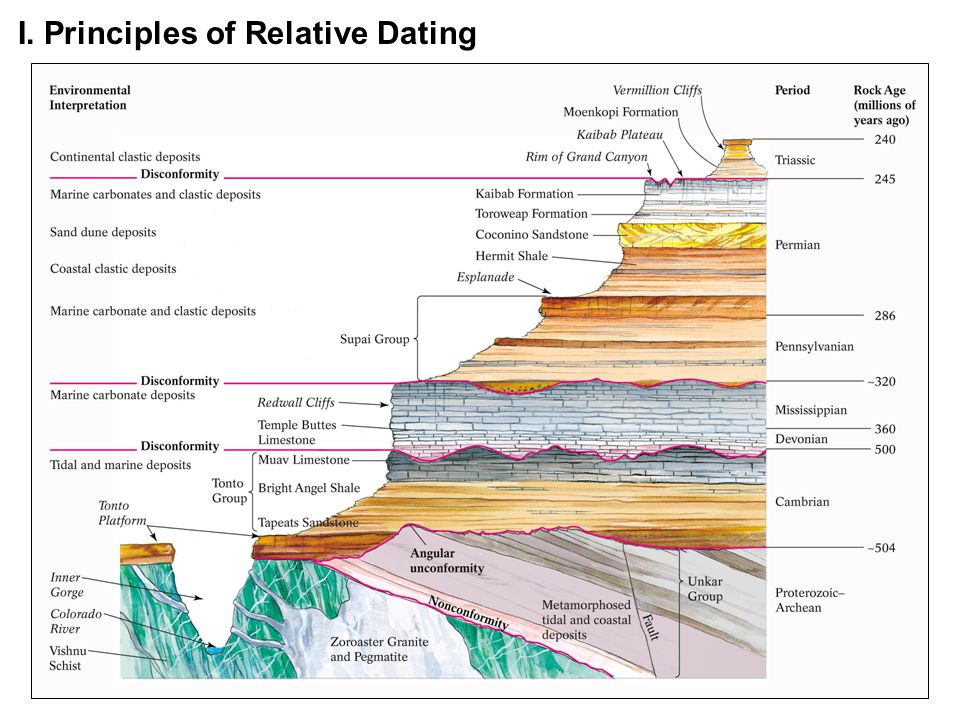This follows due to the fact that sedimentary rock is produced from the gradual accumulation of sediment on the surface.
Navigation menu
Therefore newer sediment is continually deposited on top of previously deposited or older sediment. In other words, as sediment fills a depositional basins we would expect the upper most surface of the sediment to be parallel to the horizon. Subsequent layers would follow the same pattern. As sediment weathers and erodes from its source, and as long as it is does not encounter any physical barriers to its movement, the sediment will be deposited in all directions until it thins or fades into a different sediment type.
Geology Online Subchapter
For purposes of relative dating this principle is used to identify faults and erosional features within the rock record. The principle of cross-cutting states that any geologic feature that crosses other layers or rock must be younger then the material it cuts across. Using this principle any fault or igneous intrusion must be younger than all material it or layers it crosses.
Once a rock is lithified no other material can be incorporated within its internal structure. In order for any material to be included within in the rock it must have been present at the time the rock was lithified. For example, in order to get a pebble inside an igneous rock it must be incorporated when the igneous rock is still molten-- such as when lava flows over the surface.
Description
Therefore, the piece, or inclusion, must be older than the material it is included in. Lastly the Principle of Fossil Succession.
Here is what I have so far: I looked at the cracks first. E crack goes through A crack. B crack goes through A crack.
Relative dating
B crack goes through I crack. B crack goes through G crack.

I crack goes through G crack. G crack goes through A crack.
Since B breaks all of the "worms" but E only breaks through four of the five "worms," we can place the cracks as, from oldest to youngest A, G, I, E, B Then I started to place the "worms" between the cracks using principle of cross-cutting relationships. I got in the end oldest to youngest: I believe I remember doing similar exercises back in Intro to Geology myself You gave some explanation of your thinking, and it's certainly an earth sciences related problem.
So really not sure why some might think it'd merit closing. Sign up or log in Sign up using Google.
- free dating network sites.
- rocks - Puzzle using relative dating principles - Earth Science Stack Exchange.
- is dating a bad thing.
- .
Sign up using Facebook. Sign up using Email and Password.
